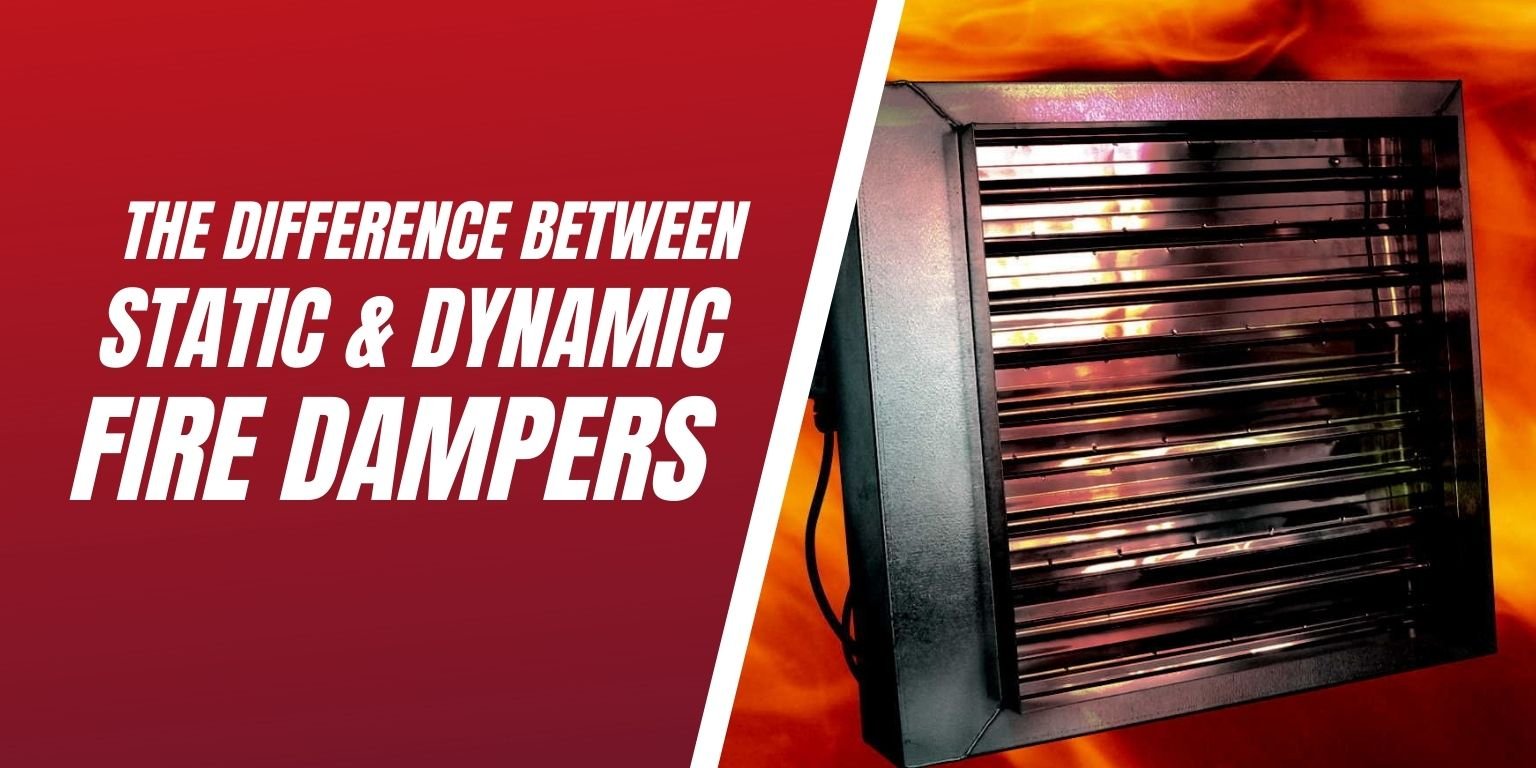
Fire dampers are an important part of your facility’s fire and life safety systems. They do their part to keep us safe from any potential hazard. However, there are two different types of fire dampers: static and dynamic. But trying to decide between a static fire damper or a dynamic fire damper might seem a bit overwhelming. Therefore, understanding what fire dampers do and how they do it is an important part of determining what will work best for your HVAC system.
What Is a Fire Damper?
Fire dampers help prevent the spread of fire and smoke within the ventilation and ductwork of a building by containing it to its original location.
How Does a Fire Damper Work?
In general, a fire damper works when the heat from the fire causes the normal temperature of a room to rise to about 165 degrees Fahrenheit. The fusible link attached to the damper would then melt, causing the damper’s door to close. In rooms where the normal temperature of the room is consistently higher, a higher degree fusible link would be attached to the damper. These particular fusible links would melt at a temperature of about 212 Fahrenheit. With the damper now shut, the air distribution and oxygen supply to the parts of the building where a fire is present would be cut off. In other words, there wouldn’t be any oxygen to help feed the fire, and smoke wouldn’t be able to circulated throughout the building.
Fire dampers also help to contain the fire to its origins, because fire dampers resist the passage of flames through them. All of these functions are crucial to containing a fire and keeping yourself and your employees safe.
Types Of Fire Dampers
Static Fire Dampers
- Installed in duct systems or penetrations where the HVAC system is automatically shut down in the event of a fire.
- The fan will turn off, and these dampers are designed like a curtain, allowing the damper to fall and shut due to gravity.
- Certified by Underwriter’s Laboratory to carry an hourly fire-protection rating, usually between 1.5 - 3 hours
Dynamic Fire Dampers
- Installed in vertical barriers, where the HVAC system fan will continue to blow in the event of a fire.
- Because the fan stays on, the spring-loaded design helps the damper to spring shut against the air pressure
- In addition to an hour fire-protection rating, fire dampers used in dynamic settings also carry an airflow rating, which indicates the maximum velocity and static pressure the damper is designed for.
- Certified by the Underwriter's Laboratory to carry an hourly fire-protection rating, usually between 1.5 - 3 hours
Fire Damper Inspections and Repairs
Understanding how a fire damper works can help you determine the best system for your facility’s HVAC System. However, dampers have a tendency to fail, which is why inspecting and repairing fire dampers are so strictly enforced. It only takes about 30 seconds for a small flame to grow and become a major fire. By cutting off the passageways for flames to travel, the fire will be contained to one specific location.
For more information about fire dampers, Contact Us Here or call 888-675-4519 to find out how LSS can help you keep your fire dampers in compliance.

